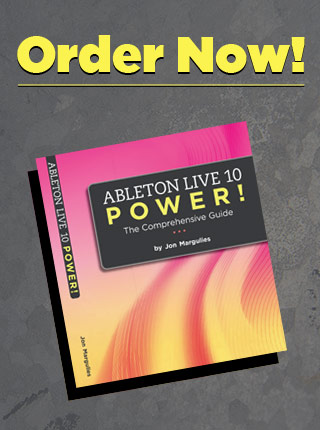Hopefully the last couple of tips have made the point that Arpeggiator is not just a device that eats chords and craps Baba O’Riley. I find that exploring what it can do with one note at a time really helps to demystify some of its more interesting features.
The nifty thing about the Velocity section is that it can be used to create velocity curves in either direction:
The example above with increase the velocity of each repeated note over 1.26 seconds until it reaches 127, so the notes increase in volume.
Of course, you could also program the instrument you’re triggering to map velocity to another parameter (or several parameters) and take advantage of this curve to do other strange and interesting stuff…
….such as modulate the volume of an oscillator that’s doing FM and changing the timbre of the synth.
If you’re going to get into doing fancy stuff with velocity curves, you may want to put the Velocity device in front of the Arpeggiator to ensure that the velocity of incoming notes is always the same.
In the above example, Out Hi and Out low are set to 1. This means that any note you play will have its velocity set to 1 so the Arpeggiator can sweep it through the full range of values up to 127. .





